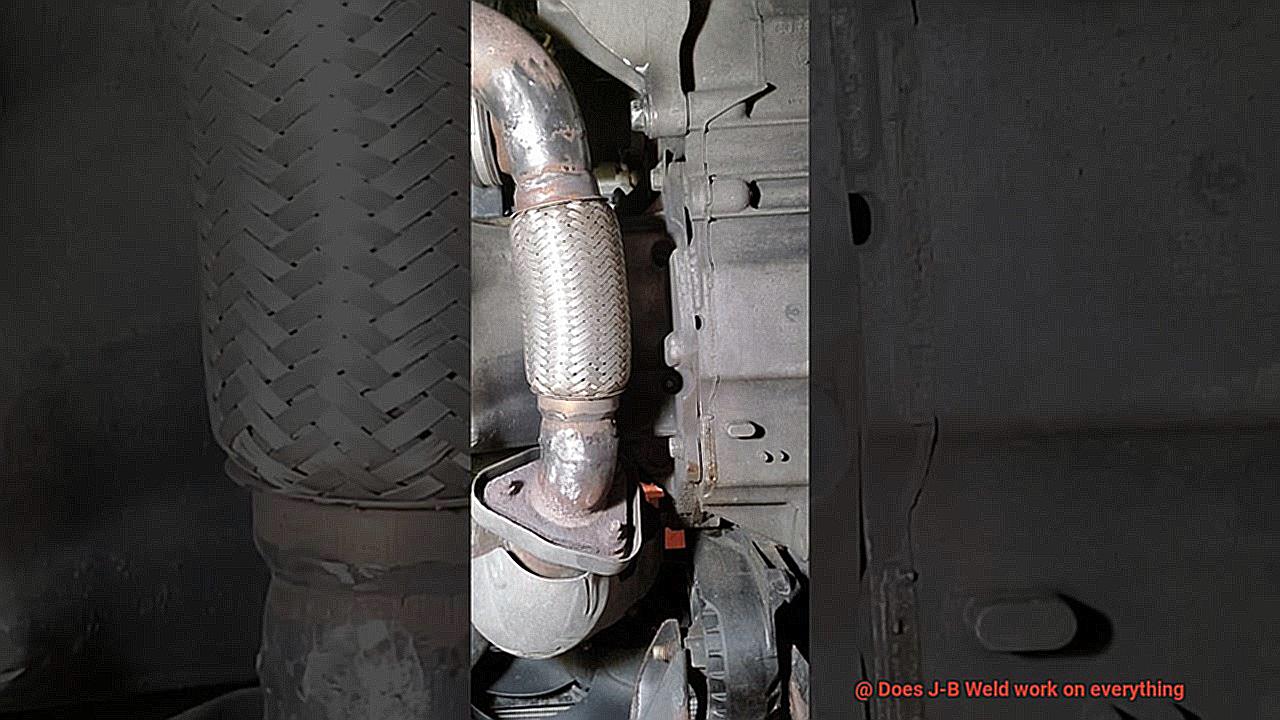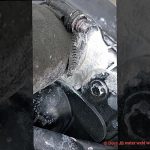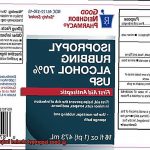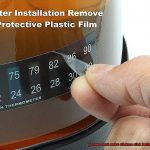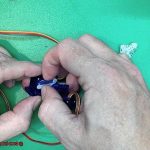Tired of playing handyman and constantly struggling to fix broken stuff around the house? Well, fear not. J-B Weld has swooped in like a superhero adhesive, promising to rescue your broken items with ease. But, let’s get real for a moment – can this magical concoction really work its magic on any material? Prepare yourself for an epic journey into the world of J-B Weld as we uncover its true effectiveness on different surfaces. From metal to plastic, ceramic to wood – we’re about to reveal which materials J-B Weld can handle like a pro and where it might stumble. So grab your toolbox and get ready for an adhesive adventure that will revolutionize your repair game.
What is J-B Weld?
Contents
When it comes to repairs, finding a reliable adhesive that can bond various materials with strength and durability is crucial. Enter J-B Weld, the superhero of glues. This versatile epoxy adhesive has gained a reputation for its ability to create powerful bonds, earning it the nickname “cold weld.” In this article, we will explore the wonders of J-B Weld, discussing its features, uses, and important considerations.
Unleashing the Power:
J-B Weld is a two-part epoxy adhesive composed of a resin and a hardener. When mixed together in equal amounts, these two components create a chemical reaction that forms an unbreakable bond. This impressive adhesive can unite a wide range of materials, including metal, wood, plastic, ceramic, and more. From fixing broken items to reinforcing weak joints, J-B Weld provides a permanent repair solution.
Strength and Versatility:
One of the standout features of J-B Weld is its incredible strength. Unlike temporary fixes offered by other adhesives, J-B Weld creates a bond that is as strong as or even stronger than the original materials. This powerhouse adhesive can withstand high temperatures ranging from -67°F to 500°F (-55°C to 260°C), making it suitable for both indoor and outdoor applications. Additionally, J-B Weld exhibits excellent resistance to chemicals such as gasoline, oil, and acids, making it a favorite among automotive enthusiasts and industrial professionals alike.
Ease of Use:
Using J-B Weld is a breeze. Begin by ensuring that the surfaces to be bonded are clean and free from grease or debris. Next, mix equal amounts of the resin and hardener thoroughly. Apply the mixture to the surfaces and allow it to cure for around 4-6 hours (depending on temperature and humidity). After curing, your bond will be fully formed and ready for action.
Important Considerations:
While J-B Weld is a versatile and robust adhesive, it’s important to note that it may not work effectively on every material or situation. Some plastics with low surface energy, such as polyethylene and polypropylene, may not bond well with J-B Weld.
Additionally, oily or dirty surfaces can hinder its effectiveness. To ensure optimal bonding results, always test J-B Weld on a small, inconspicuous area before applying it to the entire surface.
What Materials Does J-B Weld Bond?
Look no further because J-B Weld is here to save the day. This incredible adhesive is like a superhero of glues, capable of bonding a wide range of materials together with its unbreakable strength. So, what materials can J-B Weld bond?
Let’s start with metal. J-B Weld is like a welding machine in a tube. It can join different types of metals, including steel, aluminum, brass, and copper. Whether you’re fixing a crack in a metal object or creating a strong bond between two metal pieces, J-B Weld has got your back.
But wait, there’s more. J-B Weld is not just for metalheads. Woodworkers, rejoice. It works wonders with wood materials too. Whether you’re working on a woodworking project or need to fix a broken piece of furniture, J-B Weld provides a reliable bond that will make your creations stand the test of time.
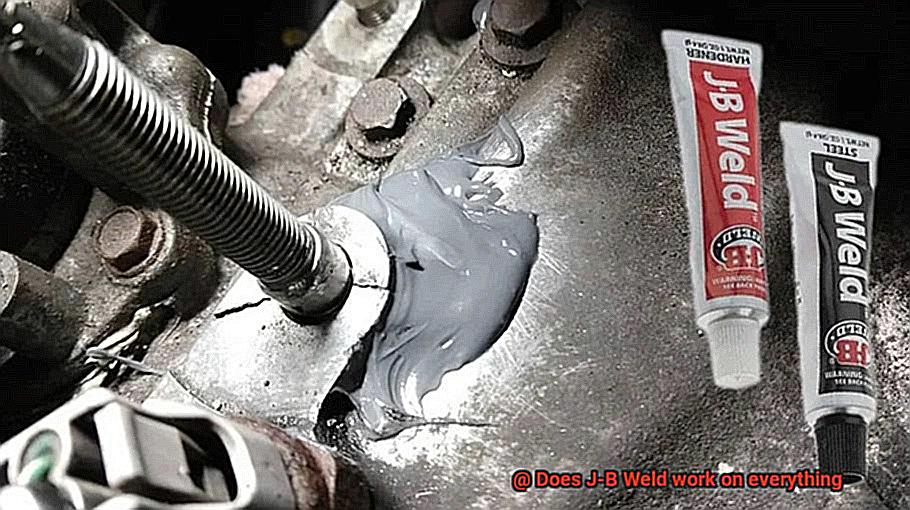
Plastic lovers, fear not. J-B Weld has your plastic bonding needs covered as well. It can bond both rigid and flexible plastics like ABS, PVC, and polycarbonate. So if you accidentally broke your favorite plastic toy or need to create something new out of plastic materials, J-B Weld is the glue for you.
Ceramic enthusiasts, listen up. J-B Weld can handle your delicate needs too. Whether you’re repairing a broken ceramic pot or attaching ceramic tiles to a surface, J-B Weld provides a strong and durable bond that can withstand high temperatures.
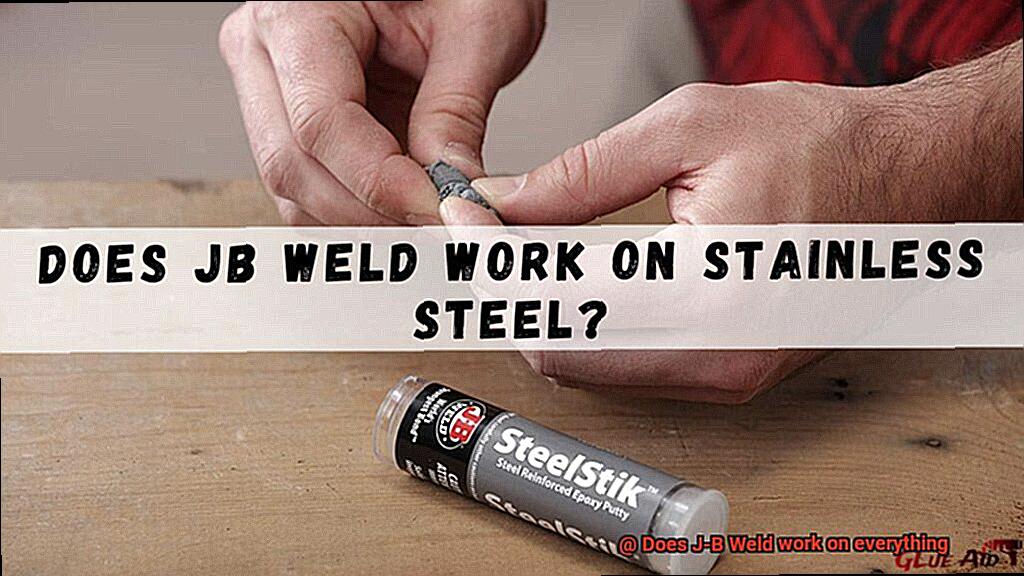
But that’s not all. J-B Weld doesn’t stop at metal, wood, plastic, and ceramic. It can also bond other materials like fiberglass, concrete, glass, and more. Its versatility knows no bounds.
Just remember to clean the surfaces before applying J-B Weld for optimal adhesion. And don’t forget to follow the instructions regarding curing time and application techniques to achieve the best results.
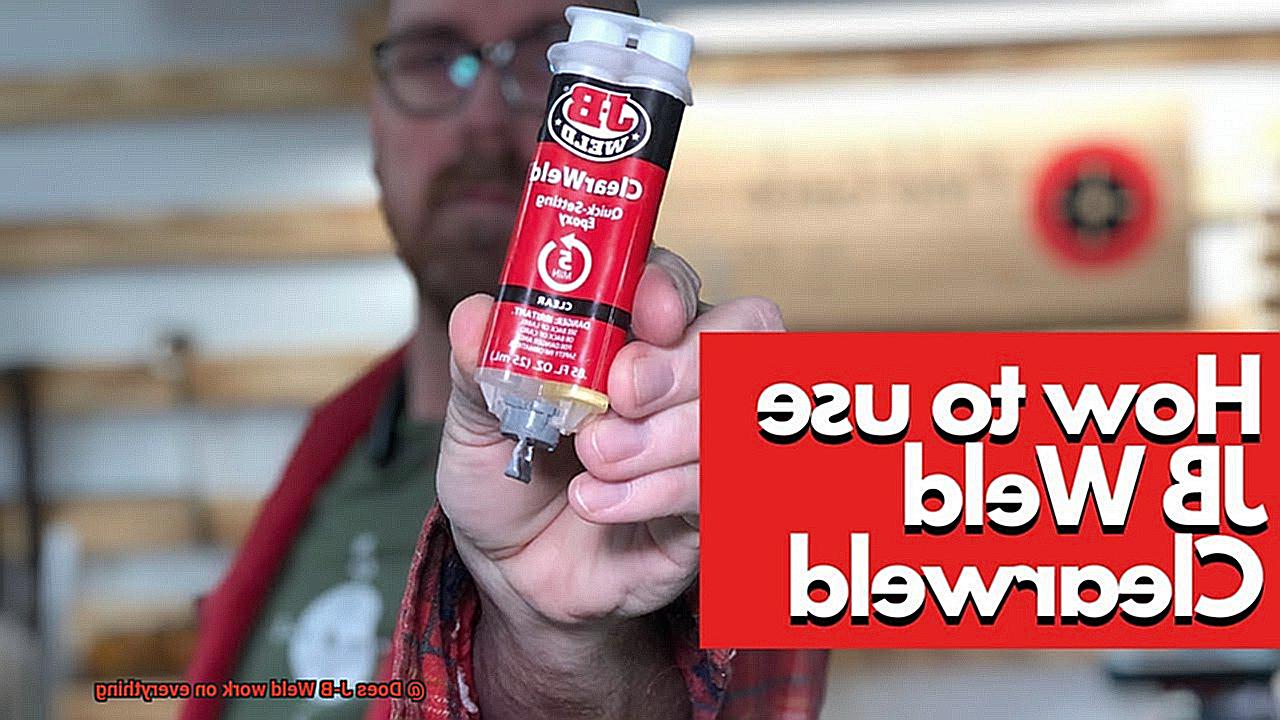
How to Prepare and Apply J-B Weld
Look no further than J-B Weld, the superhero of adhesives. Whether you’re fixing a broken toy or creating a masterpiece, J-B Weld is here to save the day. In this comprehensive guide, we will walk you through the steps of preparing and applying J-B Weld like a pro. So grab your cape and let’s get started.
Clean It Up:
Before diving into the world of J-B Weld, it’s crucial to clean those surfaces. Grab a trusty degreaser or rubbing alcohol to banish any dirt, grease, or oil. We want our superhero adhesive to form an unbreakable bond, right? So let’s make sure those surfaces are squeaky clean.
Rough It Up:
Now it’s time to give those surfaces a little love tap. Use sandpaper or a wire brush to create a rough texture. This helps J-B Weld stick like glue on a popsicle stick. But hey, don’t forget to remove any loose particles before moving on.
Mix It Up:
Unleash the power of J-B Weld. Follow the instructions on the packaging and mix the two parts together. Think of it as concocting a secret potion that brings our superhero adhesive to life. Stir it up until there are no streaks or unmixed portions. We want our adhesive to be as smooth as silk.
Apply with Care:
Now comes the fun part – applying J-B Weld. Grab your trusty disposable tool, whether it’s a popsicle stick or plastic spatula, and get generous with that adhesive. But beware, my friend, don’t go overboard and create a sticky mess. A little goes a long way.
Joining Forces:
Once you’ve applied the adhesive, it’s time to bring our surfaces together in perfect harmony. Position them with care and apply pressure for at least 15 minutes. Imagine yourself as the glue whisperer, ensuring they bond properly. Together, they’ll create something extraordinary.
The Waiting Game:
Patience is a virtue, my fellow glue gurus. After 15 minutes of bonding, give your project some alone time for 4-6 hours. This allows J-B Weld to cure and reach its maximum strength. Trust me, the wait will be worth it. You’ll be amazed by the unyielding bond it creates.
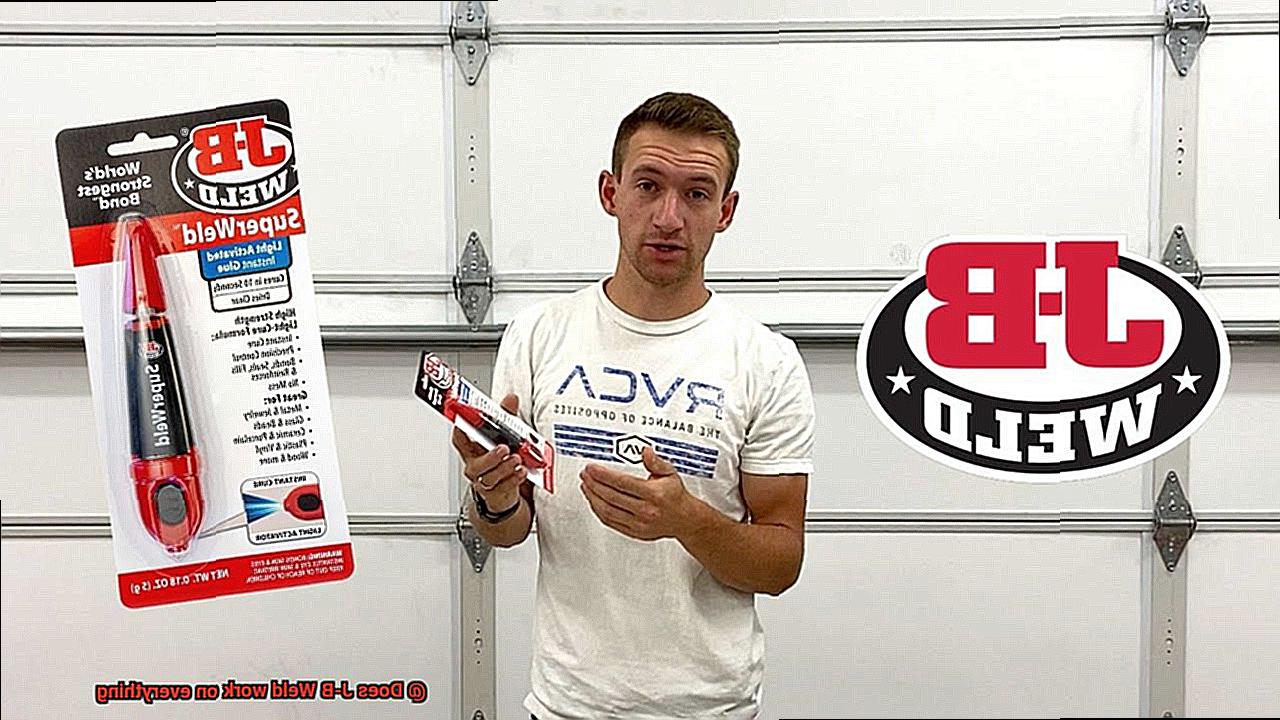
Advantages of Using J-B Weld
Look no further than J-B Weld, the ultimate adhesive solution that will leave you wondering how you ever lived without it. Whether you’re a DIY enthusiast, a professional mechanic, or just someone who appreciates the power of a strong bond, J-B Weld is here to save the day.
First and foremost, one of the biggest advantages of using J-B Weld is its versatility. This incredible adhesive can be used on a wide range of materials, including metal, wood, plastic, and ceramics. No matter what kind of repair you’re tackling, J-B Weld has got you covered. From fixing a cracked engine block to repairing a broken tool handle, this adhesive can handle it all.
But it’s not just versatility that sets J-B Weld apart. This adhesive is known for its exceptional strength. Once cured, it creates a bond that is stronger than the materials it’s joining together. So whether you’re working on automotive repairs, plumbing projects, or household fixes, you can trust that J-B Weld will provide the strength you need.
Another advantage of J-B Weld is its heat resistance. With a temperature resistance of up to 550 degrees Fahrenheit (287 degrees Celsius), this adhesive can handle even the hottest applications. So whether you’re working on an exhaust system, engine parts, or industrial equipment, you can trust that J-B Weld will hold up under extreme conditions.
In addition to its heat resistance, J-B Weld is also highly resistant to various chemicals. Fuels, oils, solvents – you name it, J-B Weld can handle it. This makes it the perfect choice for repairs in automotive and industrial settings where exposure to chemicals is common. You can trust that the bond created by J-B Weld will remain intact and unaffected by these substances.
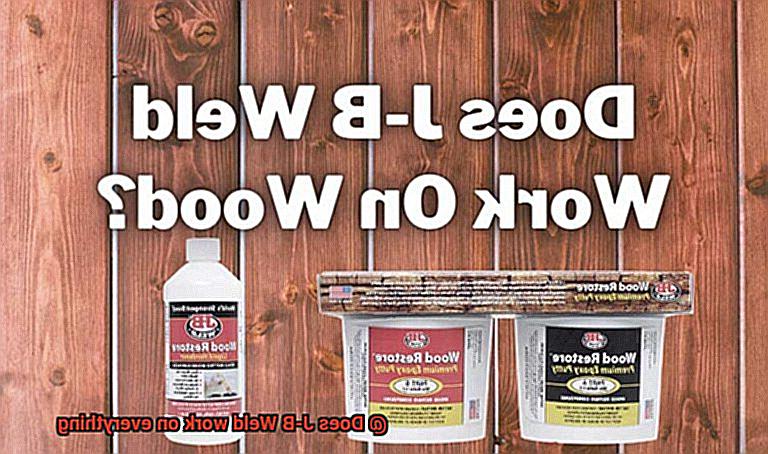
But what really sets J-B Weld apart is its ease of application. With two separate components – the resin and the hardener – all you need to do is mix them together in equal parts before applying. This adhesive has a smooth consistency that spreads easily and evenly, ensuring a strong bond without any air pockets or unevenness. Plus, you have a generous working time before it starts to cure, allowing you to position and adjust the parts being bonded.
And let’s not forget about the cost-effectiveness of J-B Weld. Compared to other alternatives like welding or replacing parts, using J-B Weld can save you both time and money. It provides a reliable and durable repair at a fraction of the cost, making it a popular choice among DIY enthusiasts, professionals, and hobbyists alike.
Lastly, when properly applied, J-B Weld can provide long-lasting results. Its strong bond and resistance to various environmental factors ensure that the repair holds up over time. This means fewer repairs and replacements in the future, saving you additional costs and efforts.
Limitations of J-B Weld
Today, we’re going to take a closer look at J-B Weld, the adhesive superhero that can seemingly fix anything. But before you embark on your next glue adventure, it’s important to understand that even superheroes have their limitations. So, let’s dive into the world of J-B Weld and explore its hidden weaknesses.
Plastic Predicament:
They come in all shapes and sizes, but alas, not all can be tamed by the mighty J-B Weld. Low surface energy plastics like polyethylene or polypropylene are like slippery foes, making it challenging for our hero to form a strong bond. If you’re dealing with these tricky plastics, it’s time to summon a different adhesive.
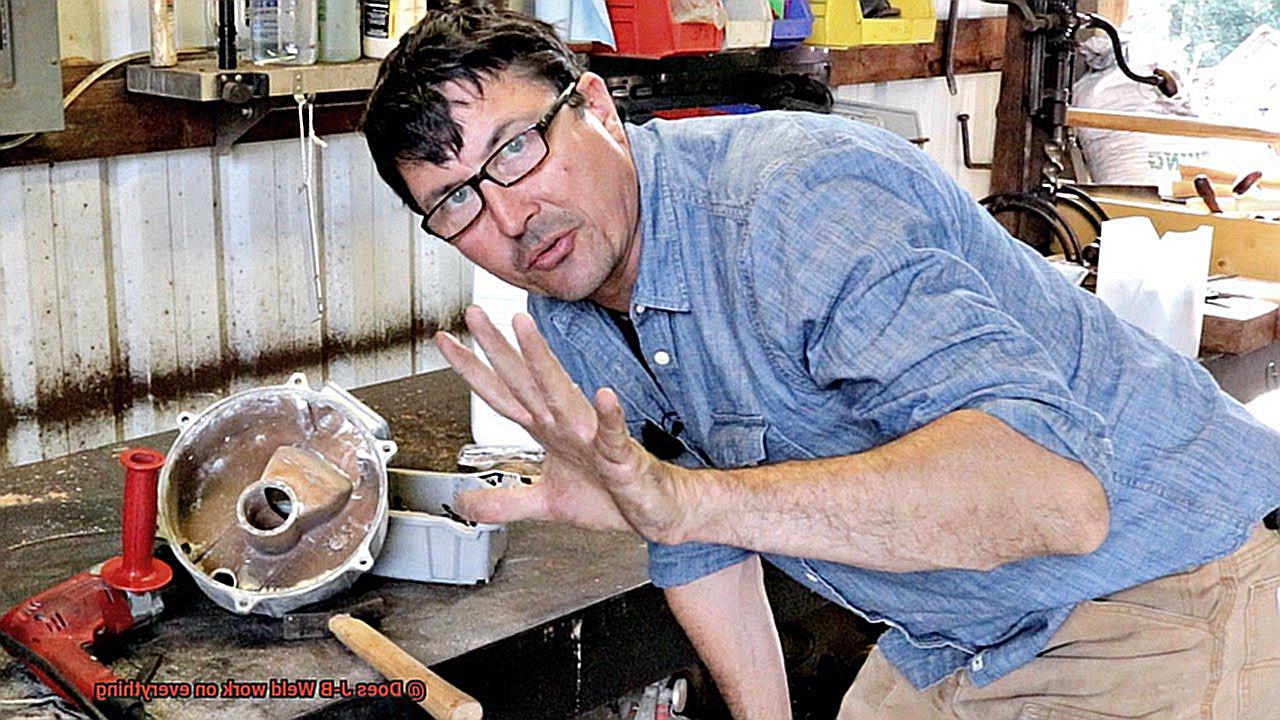
Flexibility vs. Rigid Bonding:
While J-B Weld is known for its strength, it does have a weakness when it comes to flexible materials or areas prone to movement and vibration. Over time, the adhesive may become brittle and fail to hold up under these dynamic conditions. So, if you’re looking to glue something that loves to twist and turn, J-B Weld might not be your best sidekick.
Temperature Tolerance:
Our hero can handle quite a bit of heat, but beware of extreme temperatures or prolonged exposure to heat. J-B Weld might start sweating under these conditions and lose its grip. To tackle fiery situations, call upon the aid of specialized high-temperature epoxies that are built for the heat.
Surface Prep Matters:
Remember, even superheroes need a clean canvas to work their magic on. J-B Weld performs best on clean, dry, and properly prepared surfaces. If you skip the prep work and try bonding dirty or oily surfaces, don’t be surprised if the bond is less than heroic.
Aesthetics: The Masked Glue:
While J-B Weld boasts incredible bonding power, it’s not the ideal choice for applications where looks matter. Its dark gray color can be a bit of an eyesore when trying to blend it in with certain materials. So, if you’re aiming for invisible repairs, you might want to explore other adhesive options.
Longevity and Load Limitations:
J-B Weld is super strong, but it’s not invincible. When it comes to extreme stress or heavy loads, our hero might need some reinforcement. For these intense situations, professional welding or specialized methods might be necessary to save the day.
Tips for Using J-B Weld Effectively
J-B Weld is a versatile and strong epoxy adhesive that can be used for various projects. Whether you’re repairing broken items or creating something new, using J-B Weld effectively is crucial for a strong and durable bond. In this comprehensive guide, we will provide you with 5 essential tips to help you achieve the best results with J-B Weld.
Tip 1: Prepare the Surfaces Properly
To ensure a successful bond, it’s important to prepare the surfaces you plan to bond. Clean the surfaces thoroughly, removing any dirt, grease, or oil. Use a degreaser or alcohol to eliminate contaminants that may hinder the adhesive’s effectiveness.
Tip 2: Mix It Right
Achieving the correct mixing ratio is crucial for J-B Weld’s effectiveness. This epoxy adhesive comes in two tubes – one containing the resin and the other containing the hardener. Be sure to mix equal parts of both components according to the instructions on the packaging. Thoroughly mix them together until you achieve a uniform color and consistency.
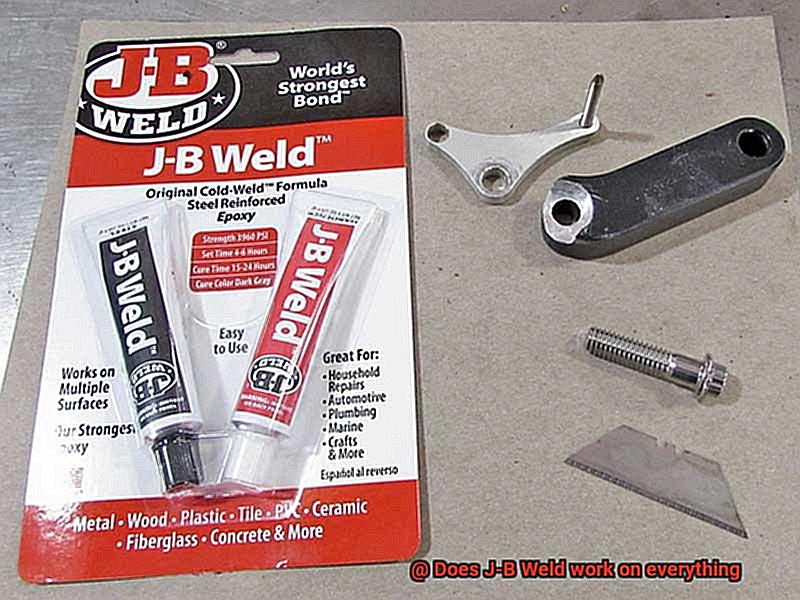
Tip 3: Apply Immediately
Once you’ve mixed J-B Weld, apply it immediately. The adhesive starts to set quickly, so ensure all necessary tools and materials are ready beforehand. Applying it promptly ensures proper bonding and prevents the adhesive from curing before application.
Tip 4: Roughen Up the Surfaces
To enhance adhesion, roughen up the surfaces being bonded. Use sandpaper or a file to create a rough texture that allows for better grip and bonding. This step is particularly important for smooth or glossy surfaces that may not provide sufficient grip for the adhesive.
Tip 5: Thin Layers are Key
When applying J-B Weld, remember to use thin layers. Thin layers allow for better penetration into porous materials and reduce the risk of air bubbles forming within the adhesive. Apply multiple thin layers if needed, allowing each layer to cure before applying the next one. This approach ensures a strong and even bond.

Alternatives to Consider When Working With Different Surfaces or Materials
When it comes to working with different surfaces or materials, it’s crucial to consider the right adhesive option. Here are some alternatives to consider:
- Epoxy: Epoxy is known for its strong bonding capabilities on non-porous surfaces like metal, glass, and ceramics. It can withstand high temperatures and resist chemicals, making it a favorite in industries like automotive and construction.
- Super Glue: This quick-drying adhesive forms an instant bond when exposed to moisture. It works well on plastics, rubber, and certain metals. However, it may not be suitable for porous materials.
- Silicone: Silicone adhesives are versatile and work well on both porous and non-porous surfaces. They’re flexible, resistant to heat, water, and chemicals, making them ideal for applications that require durability and flexibility.
- Construction Adhesive: Designed for heavy-duty projects, construction adhesive bonds materials like wood, stone, concrete, and other construction materials. It can withstand extreme temperatures and heavy loads, perfect for structural applications.
- Contact Cement: This adhesive is commonly used for laminates, veneers, and fabrics. It forms an instant bond when dry surfaces come into contact. Contact cement is known for its strength and resistance to heat and moisture.
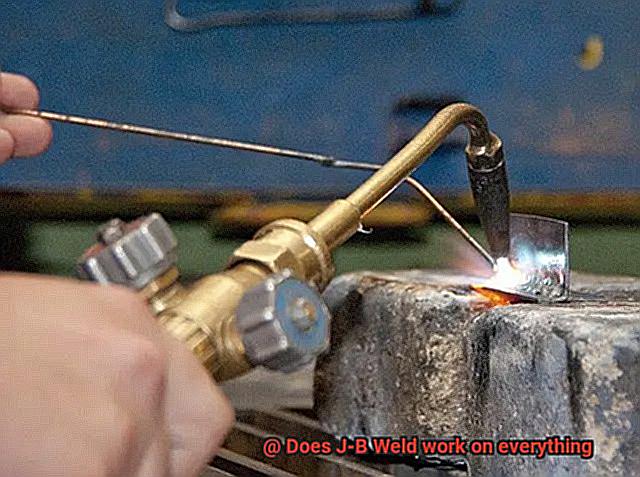
Remember to consider the properties of the surface or material you’re working with before choosing an adhesive. Each option has its own strengths and weaknesses. Proper surface preparation and following the manufacturer’s instructions are essential for achieving the best results with any adhesive.
v7Up8DdOtHc” >
Conclusion
In conclusion, J-B Weld is a true jack-of-all-trades adhesive, capable of forming unbreakable bonds between an extensive array of materials. Its unwavering strength, durability, and resistance to scorching temperatures and harsh chemicals have made it the go-to choice for DIY enthusiasts, professionals, and hobbyists alike. Whether you’re tackling metal, wood, plastic, ceramic, or even the unforgiving realms of fiberglass and concrete, rest assured that J-B Weld will deliver a bond that stands the test of time.
Nevertheless, let’s not turn a blind eye to J-B Weld’s limitations. It may struggle to conquer low surface energy plastics like polyethylene and polypropylene with its adhesive prowess. Furthermore, flexible materials or areas prone to constant movement and vibration may prove to be too much for this mighty adhesive. And let’s not forget about extreme temperatures or prolonged exposure to heat – they can put a damper on J-B Weld’s performance.
To harness the full potential of J-B Weld’s power, meticulous surface preparation is paramount. Cleanliness reigns supreme as surfaces must be free from any greasy residue or debris in order to achieve optimal adhesion. Remember: accuracy is key when it comes to mixing the resin and hardener ratios – this ensures a bond that laughs in the face of adversity. And when applying J-B Weld onto porous materials? Thin layers are your secret weapon for deeper penetration.
If J-B Weld doesn’t quite fit the bill for your specific project or material needs, fear not. There exists an arsenal of alternative adhesives at your disposal: epoxy for those seeking versatile strength; super glue for lightning-fast fixes; silicone for its water-resistant properties; construction adhesive for heavy-duty applications; and contact cement for quick-bonding wonders. Each possesses its own unique strengths and weaknesses based on the surface or material you’re looking to unite.
All in all, J-B Weld stands tall as a reliable adhesive solution for a multitude of repair projects.

